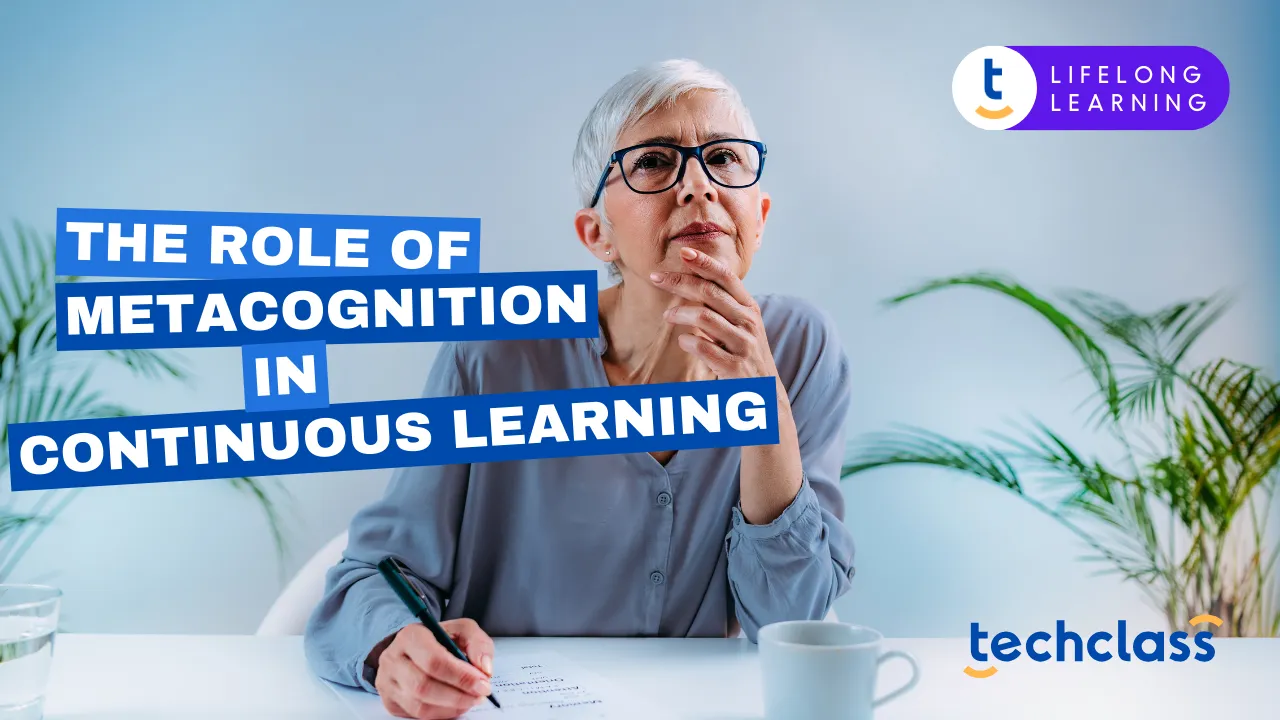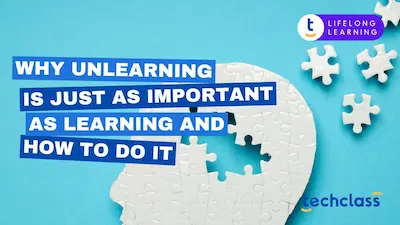
In a world where knowledge is constantly evolving, the ability to keep learning effectively has become a critical life skill. Whether you're an employee upskilling for a new role, an entrepreneur navigating complex decisions, or someone exploring new personal interests, your ability to learn continuously determines your growth. At the heart of this ability lies metacognition, a powerful yet often underappreciated tool in every learner’s mental toolkit.
At its core, metacognition is “thinking about thinking.” It refers to our ability to reflect on, understand, and regulate our cognitive processes, how we learn, solve problems, and make decisions. It’s like having an internal coach that helps us plan, monitor, and evaluate our mental efforts.
Metacognition has two main components:
This combination of self-awareness and self-management transforms passive learners into active, strategic thinkers, something crucial for learners managing busy lives and evolving goals.
Continuous learning is the process of intentionally acquiring knowledge and skills throughout your life. But unlike the structured learning of school years, learning is self-driven, goal-oriented, and often tailored to practical needs. Metacognition supports this ongoing process by giving learners the ability to:
In short, metacognition is the engine that drives effective, lifelong learning. It turns information into insight, skills into habits, and experiences into wisdom.
While metacognitive skills begin developing in childhood, they don’t stop there. In fact, adult learners often have an advantage: lived experiences. These experiences allow for more nuanced self-reflection and strategic thinking. As adults encounter diverse learning environments, professional trainings, online courses, podcasts, books, they refine their ability to plan, monitor, and evaluate their learning methods.
The development of metacognition doesn’t require formal education. It matures through intentional practice: asking reflective questions, recognizing personal learning patterns, and applying lessons across various contexts.
Here’s how learners can actively build metacognitive strength in their everyday learning:
Ask yourself reflective questions before, during, and after any learning activity:
Maintain a weekly or even occasional learning journal. Write down what you’re learning, how you approached it, and what you might change next time. You can use bullet points, mind maps, or even voice notes, whatever suits your style. This practice promotes deeper self-awareness and helps you detect learning patterns over time. You may begin to notice which strategies consistently yield better results or which environments best support your focus. Over time, your journal becomes a personal learning archive, a valuable reference point for future challenges.
Set SMART goals, Specific, Measurable, Achievable, Relevant, and Time-bound. These goals anchor your learning process and give you clear milestones to monitor. Goal setting not only provides direction but also boosts motivation by breaking down big objectives into manageable tasks. When goals are clearly defined, it’s easier to track progress and adjust strategies if needed. Reviewing your goals regularly keeps your learning efforts intentional and aligned with your personal or professional development path.
Verbalize your thoughts while tackling a problem, even if it feels odd at first. Talking through your logic reveals your mental patterns and uncovers blind spots. This strategy slows down your thinking, allowing you to better understand how you approach tasks and where your reasoning might falter. You can record your think-aloud sessions to revisit and evaluate your process later. It’s also an excellent technique for collaborative learning, think-alouds shared with peers can lead to helpful feedback and perspective shifts.
Instead of reviewing notes passively, quiz yourself. Attempt to recall concepts without looking. This helps identify gaps in understanding and builds memory retention. Self-testing is a powerful metacognitive technique because it reinforces retrieval, a deeper form of learning than recognition. It also encourages you to reflect on which areas are still weak and need more attention. Regular self-assessment trains your brain to become more aware of what you know and what you don’t, improving both confidence and accuracy in learning.
Use visual tools to connect ideas and organize knowledge. Mapping relationships between concepts boosts comprehension and metacognitive monitoring. Creating a mind map forces you to think hierarchically and relationally, which enhances understanding of complex topics. It also reveals how new knowledge connects to what you already know, making learning more meaningful and easier to recall. As your map grows, it becomes a living document of your learning journey, showing both depth and direction.
Explaining what you’ve learned to someone else is one of the best ways to identify what you truly understand versus what you only think you understand. Teaching others requires you to clarify your thinking and express it in simple, logical terms. It often reveals gaps in your knowledge that you might have missed while studying alone. Additionally, peer teaching encourages dialogue and critical questioning, which deepens understanding and fosters collaborative learning skills.
After completing a project, take time to ask:
Metacognition is a skill, and like any skill, it comes with growing pains. Here are some common obstacles learners face:
Metacognition isn’t about perfection, it’s about awareness and adaptability.
Today’s people are navigating a flood of online content and constantly changing work demands. Metacognitive skills act as a compass in this information jungle.
Whether you're comparing job training options, sorting through online courses, or deciding which skills to prioritize for a career change, your ability to monitor your thinking helps you make smarter, faster, and more confident decisions.
Even digital tools can support metacognition. Apps that offer feedback, goal tracking, or guided reflections can help you stay aware and intentional in your learning.
Metacognition isn’t a one-time concept to understand, it’s a lifelong practice. As learners, embracing metacognitive habits empowers us to learn better, solve problems more effectively, and grow with purpose.
In the face of constant change, the ability to reflect on how we think, adapt our strategies, and manage our learning is not just helpful, it’s essential.
So next time you sit down to learn something new, pause and ask yourself: How am I approaching this? What’s working? What could I do differently?
That’s metacognition in action. And it just might be your most valuable lifelong learning tool.


.webp)